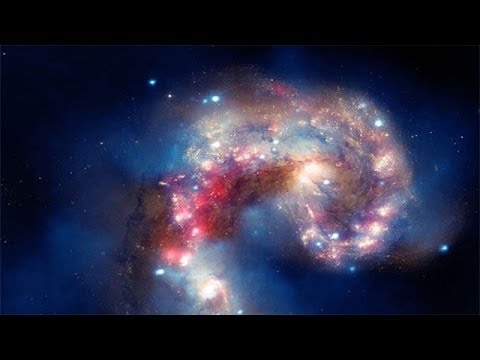China Is The First To Land On The Dark Side Of The Moon
– For thefirst time in history,a space mission has touched downon the far side of the moon. China’s Chang’e-4 probelanded in the oldestand deepest basin on the moon’s surface,making the mission amilestone for both Chinaand space exploration as a whole. This isn’t the first timeChina has landed on the moon. In 2013 Chang’e-3 successfullytouched down on Mare Imbrium,a huge lava plain on the moon’s surface. But until now, China has never exploredthe moon’s mysterious dark side. No one has. That’s actually why it’scalled the dark side. It’s not hidden from the sun,it’s hidden from our view. That’s because the moonis in what’s calledsynchronous rotation with the Earth,which means every time themoon rotates once on its axis,it also completes oneorbit around the Earth. As a result, we see the sameface of the moon every night. In fact, we only got ourfirst glimpse of the far sidein 1959, when the SovietUnion’s Luna 3 took picturesas it flew by. And while we’ve had numerous landingson the near side of the moon,no one’s attempted to touchdown on the far side before,and for good reason. It’s impossible to communicatewith anything over there. Any signal would get blockedby the rest of the moon. But China’s team has a solution. They launched a relaysatellite with a clear viewof both Chang’e-4 and the Earth. And so far, the plan’s working. Here are the very firstimages taken by Chang’e-4,the first in history evertaken from the surfaceon the dark side of the moon. What’s more, you’re looking at the oldest,largest, and deepest basin the moon has. Chang’e-4 landed on Von Karman,a flat landscape that sitsinside South Pole-Aitken Basin. The basin is around2,500 kilometers across. That’s about the distancefrom New York to Dallas. And it’s a whopping eight kilometers deep. For comparison, the deepestnatural point on Earth,the Challenger Deep, isnearly 11 kilometers deep. Next, the lander will release a roverthat will explore the surrounding area. One of it’s tasks is tostudy the compositionof rocks and dirt in the basin. Since scientists believethis is the oldest basinon the moon, learning whatit’s made of might help usunderstand how Earth’s onlymoon formed and evolved. But that’s only one goal of the mission. Besides cameras and spectrometers,Chang’e-4 also brought alongpotatoes and silkworm eggs. Researchers hope to testhow well plants can growand eggs can hatch inthe moon’s low gravity. It’s the first minigreenhouse to ever landon another world in our solar system,and might help prepare us forspace colonies in the future.













